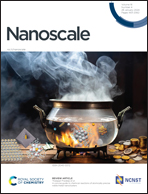Automated statistical analysis of raman spectra of nanomaterials
Abstract
Both at the academic and the industrial level, material scientists are exploring routes for mass production and functionalization of graphene, carbon nanotubes (CNT), carbon dots, 2D materials, and heterostructures of these. Proper application of the novel materials requires fast and thorough characterization of the samples. Raman spectroscopy stands out as a standard non-invasive technique capable of giving key information on the structure and electronic properties of nanomaterials, including the presence of defects, degree of functionalization, diameter (in the case of CNT), different polytypes, doping, etc. Here, we present a computational tool to automatically analyze the Raman spectral features of nanomaterials, which we illustrate with the example of CNT and graphene. The algorithm manages hundreds of spectra simultaneously and provides statistical information (distribution of Raman shifts, average values of shifts and relative intensities, standard deviations, correlation between different peaks, etc.) of the main spectral features defining the structure and electronic properties of the samples, as well as publication-ready graphical material.



 Please wait while we load your content...
Please wait while we load your content...